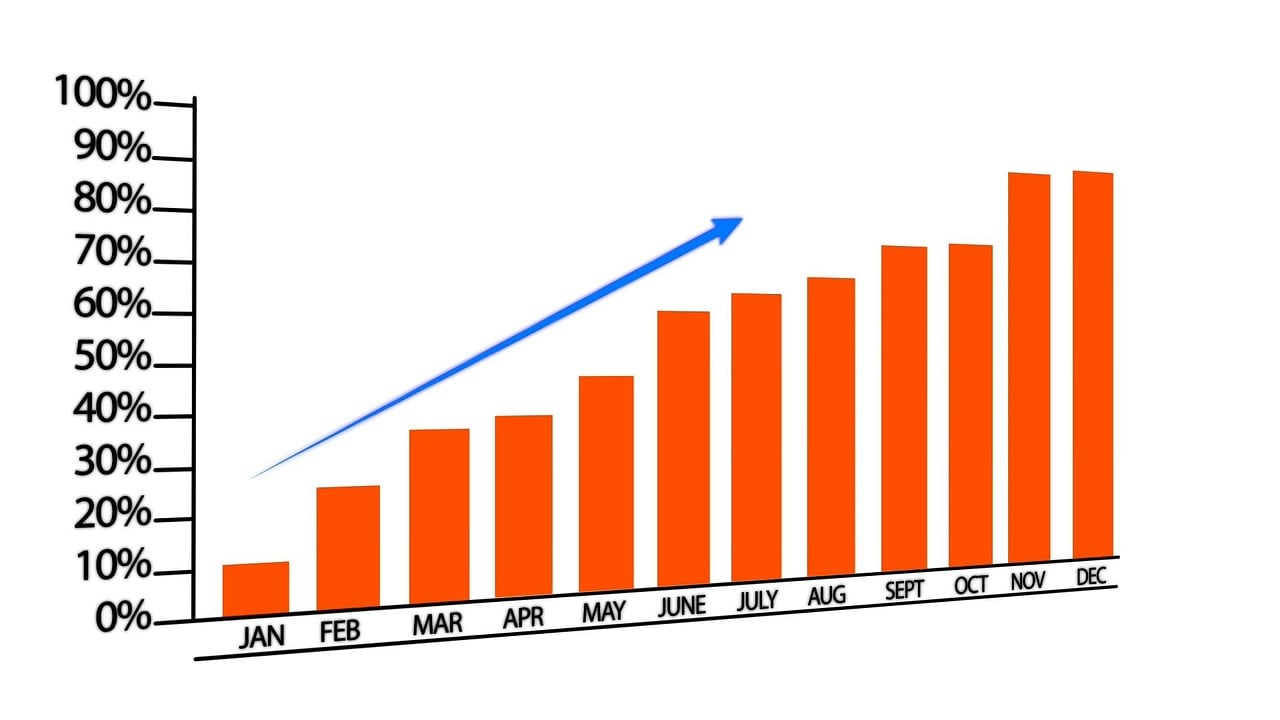Market research is a fundamental aspect of any successful digital marketing strategy. Understanding your target audience, competitors, and industry trends enables crafting effective marketing campaigns that resonate with ideal customers, driving business growth.
This blog post will serve as a guide, using a case study to illustrate the steps in conducting market research for your digital strategy.
The importance of market research in digital marketing
In the ever-evolving digital marketing landscape, success hinges on a deep understanding of your target audience, competitors, and the industry as a whole. This knowledge is the cornerstone of crafting effective marketing campaigns that resonate with your ideal customers and propel your business forward. Market research acts as the essential tool to gather these crucial insights, and incorporating it into your digital strategy unlocks a treasure trove of benefits.
1. Unveiling the Depths of Your Target Audience:
Market research empowers you to embark on a journey into the minds and hearts of your target audience. You’ll gain invaluable knowledge about their preferences, the challenges they grapple with, and the aspirations they hold dear. Imagine being able to tailor your messaging with laser precision, addressing their specific needs and painting a vivid picture of how your business can be the answer to their prayers. Market research equips you with the power to do just that, transforming your marketing efforts from generic pronouncements to targeted conversations that resonate on a personal level.
2. Riding the Waves of Industry Trends:
The digital marketing landscape is a dynamic ocean, with tides constantly shifting and new currents emerging. Market research equips you with the tools to be a savvy navigator, providing invaluable insights into the latest industry trends. Are there groundbreaking technological advancements you can leverage to give your marketing a cutting-edge edge? Perhaps a specific niche within your industry is experiencing a surge in popularity. By staying on top of these trends through market research, you’ll be able to make informed decisions that keep you ahead of the curve and allow you to capitalize on lucrative opportunities before your competitors catch on.
3. Optimizing Your Marketing Arsenal for Maximum Impact:
Imagine meticulously crafting a marketing campaign only to discover it falls flat because you haven’t chosen the right channels to reach your target audience. Market research helps you avoid this pitfall by offering a comprehensive analysis of your competitors’ strategies and your digital marketing assets. Through a thorough audit, you’ll be able to identify areas where your campaigns can be amplified and pinpoint untapped marketing channels that hold immense potential. This allows you to optimize your marketing efforts, allocating resources strategically to ensure you’re reaching the right people at the right time through the most effective channels.
4. Building Products Your Target Audience Craves:
Market research isn’t just about promoting existing products or services; it can also be a driving force behind product development. By delving into the hearts and minds of your target audience, you’ll uncover the features they crave and identify areas where your existing offerings can be improved to better meet their needs. This invaluable customer insight allows you to develop products that resonate deeply with your target market, giving you a significant edge over competitors who are simply guessing at what their customers desire.
5. Mitigating Risk and Charting a Course for Success:
Operating in the dark can be a recipe for disaster in the world of business. Market research acts as a powerful flashlight, illuminating the market landscape and allowing you to make informed decisions about your marketing investments and overall business development. By understanding the competitive landscape, customer preferences, and industry trends, you’ll be able to navigate potential risks with greater confidence and make strategic choices that pave the way for long-term success.
Conducting Market Research: A Case Study
Let’s use a hypothetical company, Envinity Solar Installation, as a case study to walk through the process of conducting market research:
Understanding the Brief and Objectives:
- We begin by understanding Envinity’s goals. They aim to generate leads for their solar installation services using digital advertising and attract homeowners with incentives like free consultations or energy audits.
- The objective is to capture qualified leads, nurture them through the sales funnel, and convert them into paying customers.
Market Research and Understanding the Target Audience:
- Tools like Statista can be used to gather data on industry trends. In this case, we see a significant rise in solar power generation in the United States over the past decade. This indicates a growing interest in solar solutions, suggesting a potential market for Envinity.
Competitor Analysis:
- Identifying key competitors helps us understand the competitive landscape. Here, we discover Sunrun as a major player and Titan as another direct competitor, both with established online marketing presences.
- We can also analyze indirect competitors like Tesla and Freedom Solar to gain insights from successful brands within the solar panel industry.
Industry Trends:
- Additional research reveals that the solar industry is projected to experience significant growth in the coming years, with substantial private investments being made in the sector. This highlights the vast potential for businesses like Infinity.
Understanding Customer Challenges:
- By delving deeper, we can identify potential challenges faced by those considering solar installations. These might include a lack of awareness about the benefits of solar power, uncertainty about the installation process, or misconceptions about costs and efficiency.
Brand and Competitor Audit:
- Auditing Envinity’s digital assets reveals they are currently only utilizing paid and organic search engine marketing (SEM/SEO). They are missing out on valuable opportunities through untapped channels like social media marketing, email marketing, and referral programs.
- Analyzing competitor Sunrun, for instance, shows they have a strong social media presence with a significant following across various platforms. This suggests potential benefits for Envinity to explore social media marketing.
Key Takeaways from the Case Study:
Our market research endeavor for Envinity Solar yielded a treasure trove of insights that will propel their business forward. Let’s delve deeper into these valuable discoveries:
1. A Booming Market Beckons: Solar Installations on the Rise
The market research painted a clear picture: the demand for solar installations is experiencing a significant upswing. This surge in interest presents a golden opportunity for Infinity Solar to tap into a rapidly growing market and establish itself as a leader in the renewable energy sector.
2. Learning from the Leaders: The Power of Social Media Marketing
By analyzing their competitors, particularly the prominent player Sunrun, we discovered the immense potential of social media marketing. Sunrun’s strong social media presence with a substantial following across various platforms highlights the effectiveness of this channel in reaching a target audience and fostering brand engagement. This insight presents a clear path for Infinity to expand their digital marketing strategy and leverage the power of social media to connect with potential customers.
3. A Diversified Digital Landscape Awaits: Untapped Marketing Channels
The market research revealed that Infinity Solar is currently missing out on a wealth of opportunities by solely focusing on paid and organic search engine marketing (SEM/SEO). A vast digital landscape awaits exploration, with channels like social media marketing, email marketing, and referral programs holding immense potential for customer acquisition and brand advocacy. By implementing a multi-channel marketing strategy informed by research, Infinity can broaden their reach and connect with their target audience on various platforms.
4. Addressing Customer Concerns: The Key to Effective Messaging
Understanding the specific challenges faced by potential customers is crucial for crafting compelling marketing messages. Our research unveiled that many individuals considering solar installations grapple with a lack of awareness about the benefits, misconceptions regarding costs and efficiency, and uncertainties about the installation process. By addressing these concerns directly through targeted messaging that resonates with their anxieties and aspirations, Infinity can effectively convert leads into paying customers.
Building a Data-Driven Digital Strategy: Actionable Steps
Now that we’ve unearthed the valuable insights from market research, let’s translate them into actionable steps that will empower Infinity Solar to craft a data-driven digital strategy:
1. Charting the Course: Defining Goals and Target Audience
The first step is to establish a clear roadmap for success. This involves defining Infinity’s specific marketing goals, whether it’s brand awareness, lead generation, or website traffic. Additionally, creating a detailed profile of their ideal customer will ensure their marketing efforts are laser-focused on the individuals most likely to convert.
2. Harnessing the Power of Research Tools
A wealth of online tools and resources are at Infinity’s disposal to gather crucial data. By leveraging these resources, they can gain valuable insights into industry trends, conduct competitor analysis to stay ahead of the curve, and glean audience insights to tailor their messaging accordingly.
3. Engaging in Direct Dialogue: Conducting Surveys and Focus Groups
Supplementing online research with direct feedback from the target audience can provide invaluable qualitative data. Conducting surveys or focus groups allows Infinity to gain a deeper understanding of their target market’s needs, concerns, and preferences. This firsthand information can be used to refine their marketing strategy and craft messaging that resonates on a personal level.
4. Unearthing Hidden Gems: Analyzing Existing Data
Infinity already possesses a treasure trove of data within their grasp. Analyzing website traffic data, social media engagement metrics, and customer interactions can provide valuable insights into user behavior and preferences. By leveraging this existing data, they can identify areas for improvement within their current marketing efforts and optimize their campaigns for maximum impact.
5. Evolving with the Market: Continuous Refinement
The digital marketing landscape is constantly in flux. By incorporating a culture of continuous research and data analysis, Envinity Solar can ensure its strategy remains adaptable and effective. Regularly revisiting their market research and analyzing campaign performance allows them to refine their approach, stay ahead of the curve, and maintain a competitive edge in the ever-growing solar energy market.
Common Challenges in Digital Marketing Research and How to Overcome Them
However, cconducting effective research comes with several challenges. let us explore the common obstacles in digital marketing research and provide actionable solutions to overcome them.
1. Data Overload and Analysis Paralysis
With the vast amount of data available, marketers often struggle to filter relevant insights from unnecessary information. This can lead to confusion and inefficient decision-making.
Solution: Use analytics tools like Google Analytics, SEMrush, or Ahrefs to gather structured insights. Focus on key performance indicators (KPIs) that align with your business objectives to ensure that your research is actionable.
2. Inaccurate or Outdated Data
Data accuracy is crucial in digital marketing research. Relying on outdated or incorrect information can lead to poor marketing decisions and wasted resources.
Solution: Regularly update and verify data sources. Utilize trusted research tools, conduct frequent audits, and cross-check data against multiple sources to ensure reliability.
3. Understanding Consumer Behavior
Consumer preferences and behaviors change rapidly, making it challenging to develop consistent marketing strategies.
Solution: Conduct surveys, track social media trends, and leverage AI-powered analytics to understand audience behavior in real-time. Creating buyer personas can also help tailor marketing efforts to specific customer segments.
4. Competitive Analysis Challenges
Identifying and analyzing competitors effectively can be overwhelming, especially with rapidly changing market trends.
Solution: Use competitor analysis tools like SpyFu, SimilarWeb, or BuzzSumo to track competitors’ digital strategies. Monitor their content, keywords, and engagement tactics to refine your own approach.
5. Budget Constraints
Many businesses struggle with limited resources for conducting in-depth market research.
Solution: Start with free or affordable tools like Google Trends, AnswerThePublic, and social media analytics. Prioritize high-impact research areas and consider outsourcing research tasks to digital marketing agencies if necessary.
The Future of Market Research in Digital Marketing
As technology advances, the future of market research is shifting towards automation, AI-powered analytics, and real-time insights that will redefine how businesses understand consumer behavior. Here’s what the future holds for market research in digital marketing:
1. Artificial Intelligence & Machine Learning
AI and machine learning are revolutionizing market research by automating data collection, analysis, and prediction. These technologies can process vast amounts of data from multiple sources, identify patterns, and generate actionable insights faster than traditional methods. AI-driven sentiment analysis, predictive analytics, and customer profiling will enhance digital marketing strategies with hyper-personalized campaigns.
2. Real-Time Data & Predictive Analytics
Future market research will rely heavily on real-time data. Businesses will move away from static reports and embrace dynamic dashboards that provide up-to-the-minute insights into consumer preferences, purchasing behavior, and market trends. Predictive analytics will help marketers anticipate future trends, allowing them to create proactive strategies rather than reactive ones.
3. Voice & Visual Search Insights
With the rise of voice assistants and visual search tools, businesses must adapt their market research strategies. Understanding how consumers use voice search queries and visual content to find information will become essential. Digital marketers will need to optimize for natural language processing (NLP) and image recognition technologies to ensure their content remains discoverable.
4. Neuromarketing & Emotional Analytics
The future of market research will delve deeper into consumer emotions. Neuromarketing, which studies how the brain responds to marketing stimuli, will help brands craft emotionally compelling campaigns. Emotion AI, which analyzes facial expressions, tone of voice, and body language, will provide deeper insights into customer sentiment and engagement.
5. Blockchain for Data Integrity
As data privacy concerns grow, blockchain technology will play a crucial role in market research. It will enhance data security, transparency, and authenticity, ensuring that businesses use reliable and unaltered consumer insights. This will foster greater trust between brands and their customers.
6. Integration of Augmented Reality (AR) & Virtual Reality (VR)
AR and VR will transform how brands conduct consumer research. Virtual focus groups and interactive simulations will provide immersive experiences that gather behavioral insights more effectively. Marketers will be able to test products, ad campaigns, and user experiences in a virtual environment before launching them.
Conclusion
Market research plays a vital role in shaping digital marketing strategies. It enables businesses to gain deep insights into their audience, make data-driven decisions, and stay ahead of competitors.
By implementing thorough research and overcoming potential obstacles, companies can unlock the full potential of market intelligence to drive growth and success in the digital space.
As technology continues to evolve, staying updated with emerging trends and utilizing advanced tools will be essential for businesses striving to maintain a strong presence in the ever-changing digital marketing landscape.
Ultimately, businesses that prioritize continuous research and adaptation will not only survive but thrive, creating long-term value and sustainable success.
For more digital marketing tips and insights, stay connected with our blog. Need help with digital marketing research? Contact us today to elevate your strategy!


